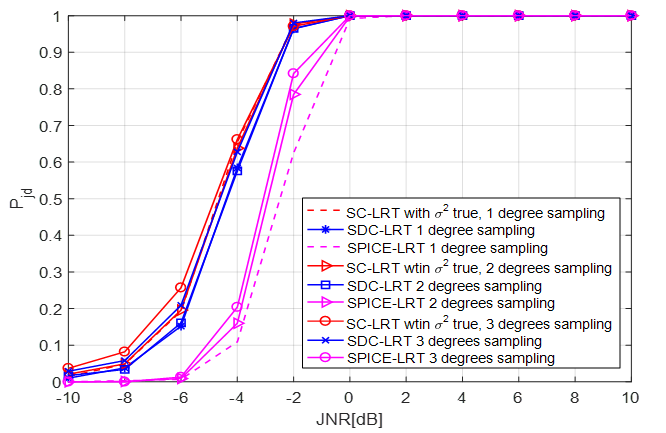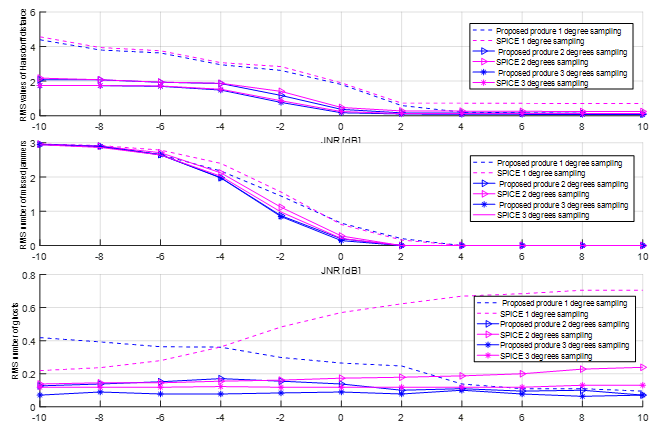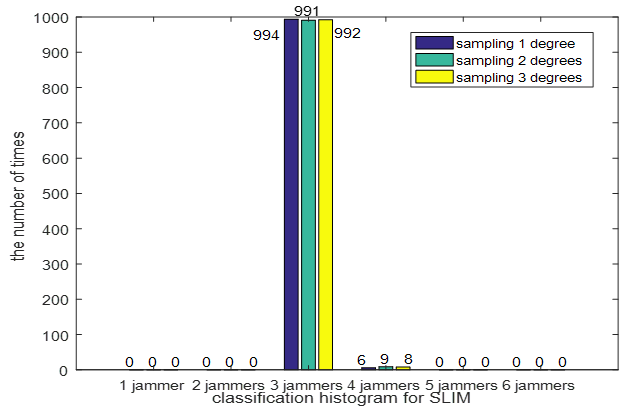The Noise-like jammers (NLJs) is one of the important active jamming to sonar. This active attack is aimed at denying accurate measurement of target information, interfering radar or preventing detection by generating non-deceptive interference which blends into the thermal noise of the radar receiver.
In the previous studies, researchers proposed several methods to detect and suppress NLJs from the signal processing level, such as the sidelobe canceler, rank-one modification of the interference covariance matrix and two-stage adaptive detection architecture. However, these approaches were not capable of providing any information about either the number, the angles of arrival or the received power of the detected NLJs. Under such circumstances, their performance needs to be improved.
In order to solve the above problems, researchers from the Institute of Acoustics of the Chinese Academy of Sciences (IACAS) together with their Italian, American and domestic colleagues devised two architectures resorting to the sparse learning via iterative minimization (SLIM) approach, namely the sparse cyclic likelihood ratio test (SC-LRT) and sparse doubly cyclic likelihood ratio test (SDC-LRT). They were used for the joint detection of multiple NLJs and the estimation of the respective relevant parameters, such as the angles of arrival and the number of threats.
The analysis highlighted that the proposed architectures SC-LRT and SDC-LRT could provide higher detection probability and lower root mean square (RMS) errors outperforming their competitor named the sparse iterative covariance-based estimation likelihood ratio test (SPICE-LRT), at least for the considered parameter setting. In addition, it turned out that the proposed procedure could guarantee a percentage of correct estimation for the number of NLJs greater than 99 % for all the considered sampling intervals, whereas SPICE exhibits percentage higher than 93 % when the grid sampling rate was 2 or 3 degrees.

Figure 1. Detection probability versus JNR for different detectors. (Image by IACAS)

Figure 2. RMS values versus JNR. (Image by IACAS)

Figure 3. Classification histograms for the number of NLJs based on SLIM detector. (Image by IACAS)

Figure 4. Classification histograms for the number of NLJs based on SPICE detector. (Image by IACAS)
The proposed methods have good NLJs detection performance and could accurately estimate the number and angles of arrival of NLJs, which enrich the means of radar and sonar against the attack of active jamming. Future research tracks might include the extension of the above framework to the case of multiple coherent targets.
The research, published in the international journal IEEE Transactions on Aerospace and Electronic Systems, was partially supported by the National Natural Science Foundation of China (No.1708509, No.61971412).
Reference:
YAN Linjie, Pia Addabbo, ZHANG Yuxuan, HAO Chengpeng, LIU Jun, LI Jian, Danilo Orlando. A Sparse Learning Approach to the Detection of Multiple Noise-Like Jammers. IEEE Transactions on Aerospace and Electronic Systems, Early Access Article, April 2020. DOI: 10.1109/TAES.2020.2988960.
Contact:
ZHOU Wenjia
Institute of Acoustics, Chinese Academy of Sciences, 100190 Beijing, China
E-mail: media@mail.ioa.ac.cn


